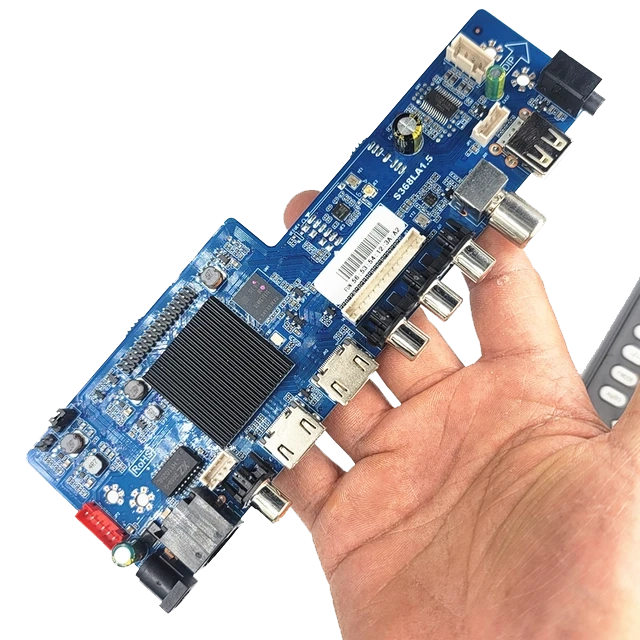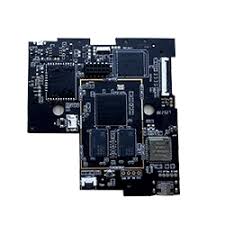
Start your adventure the sector of Android software development for miniature computing devices. This comprehensive guide will offer you the important facts and hands-on methods to skillfully craft your own Android-operated SBC projects. From comprehending essential theories of Android design to examining complicated world of SBC gadgets, this guide will equip your a productive programming journey.
- Uncover the wide range of available SBC systems and their individual capabilities.
- Master essential Android development tools, including Android Studio, SDKs, and emulators.
- Internalize the intricacies of preparing your SBC workspace for seamless Android functionality.
Explore best practices for engineering robust and optimized Android programs tailored for SBC hardware constraints.
Constructing Android Solutions via SBCs
Harnessing capabilities of a Single Board Computer (SBC) for Android application engineering is an increasingly widely adopted approach. These compact and versatile devices provide a cost-effective space for prototyping, enabling coders to harness the capabilities of Android without the need for a traditional machine. By leveraging the SBC's resources such as its processor, memory, and connectivity options, developers can create Android applications that range from simple utilities to more complex software. The skill to customize the hardware and software environment further enhances the flexibility of SBCs for Android development, making them a beneficial tool for both practitioners.
Integrating Android Dev Boards into IoT Innovations
For budding engineers delving into the world of Internet of Things (IoT), Android dev boards present a efficient platform to bring their novel ideas to life. These compact boards, often equipped with advanced hardware and responsive software development kits (SDKs), provide a firm foundation for prototyping a wide range of IoT devices. From home regulation systems to technical monitoring devices, Android dev boards empower companies to establish cutting-edge IoT projects with ease.
- Utilizing the extensive Android ecosystem, developers can utilize a vast library of tools specifically designed for IoT tools. This range of resources allows for accelerated development and supports the creation of cutting-edge IoT solutions.
- As well, Android dev boards often feature fused connectivity options such as Wi-Fi, Bluetooth, and cellular, facilitating seamless linkage with other devices and cloud platforms. This connectivity capability is necessary for enabling real-time data analysis and remote administration of IoT solutions.
- To conclude, the collective contributions of Android dev boards fosters a thriving ecosystem of developers, providing ample assistance for tackling any challenges encountered during the development process.
Assessing Android SBCs for Audio-Visual Projects
The field of multimedia applications is constantly advancing, pushing the boundaries of what's achievable. In this dynamic landscape, Android System-on-Chips (SBCs) have emerged as a powerful strategy for developers seeking to develop innovative and engaging experiences.
Such compact yet equipped SBCs contribute a distinct blend of processing efficiency, connectivity, and multimedia strengths that make them advantageous for a sweeping collection of applications.
From high-definition video playback to prompt audio processing, Android SBCs are fitted to handle the challenges of today's multimedia environment.
- Notably, their open-source nature supports developers to modify hardware and software to match specific application demands.
- The given level of versatility clears paths for developers to extend the limits of multimedia innovation.
Unlock Personalization on Android Dev Boards
A development board like the Raspberry Pi or one Nexus Player provides a unique opportunity to configure your Android experience. By diving deep with the underlying architecture, you can revise everything from the system shell to third-party tools. This level of governance allows experimenters to pioneer and create truly unique Android setups. Whether you're interested in enhance your device's performance, explore new features, or simply satisfy your curiosity, a dev board can unlock a world of possibilities.
- Acquire knowledge of the fundamentals of Android development
- Craft custom ROMs and kernels
- Analyze new apps and features
- Join your device to supplementary interfaces
Troubleshooting SBC Android Issues
When working with Android development on Single Board Computers (SBCs), you might encounter a variety of challenges. These can range from simple configuration errors to complex software bugs. Effective debugging and troubleshooting are crucial for identifying the root cause of these problems and restoring your Android environment to full functionality. Utilize the vast resources available online, such as forums and documentation, to gain insights into common issues faced by other developers in similar setups.
Start by carefully reviewing your runtime reports for any error messages or warnings that might provide clues about the problem. Apply a thorough logging strategy within your Android application to capture relevant information during runtime. This can help pinpoint specific areas where errors are occurring. Don't hesitate to examine different configurations and settings to see how they affect the behavior of your system.
- Apply time in understanding the hardware capabilities of your SBC, as limitations in processing power or memory can contribute to Android performance issues.
- Craft a strong understanding of the Android SDK and its kits to effectively debug your applications.
- Stay updated with the latest launches of both Android and your SBC's firmware, as these often include bug fixes and performance improvements.
Improving Android SBC Speed
When deploying Android-based integrated circuits single board systems, maximizing efficiency is paramount. To achieve this, developers and engineers can leverage a assortment of approaches. This involves methodically adjusting software and hardware components to ensure seamless performance. Key areas for optimization include capacity planning, power consumption, network connectivity, and application responsiveness.
- Accentuating real-time processing is fundamental for applications that demand immediate answers.
- Utilizing lightweight components can greatly reduce memory pressure, thereby enhancing overall functionality.
Regularly refreshing the Android operating system and utilities is essential for addressing security issues and securing stability boosts.
Implementing Android SBC Security Best Practices
Securing your Android systems against threats is paramount. Employing sound security best practices for your Android System-on-a-Chip (SBC) deployment can significantly mitigate risks. Regularly improve your SBC's software to address gaps. Initiate robust access mechanisms to curb user permissions and network communication. Conduct scheduled security inspections to identify potential risks and deploy necessary tactics.
- Guide your users about common security threats and best practices for protecting their devices.
- Shield sensitive data at rest and in transit using strong protocols.
By adhering to these best practices, you can create a more secure environment for your Android SBC.
Maximizing Potential with SBC Android Technology
The world of embedded Hardware (SBCs) provides a compelling platform for developing innovative Android applications. By fusing the power of Android with the unique capabilities of SBCs, developers can create complex solutions across diverse industries. This approach offers incomparable flexibility and customization options, facilitating the development of tailored applications that cater to specific conditions. Whether it's for automotive systems, SBCs coupled with Android development open up a comprehensive range of possibilities.
- Exploiting the low-power nature of SBCs for resource-constrained environments.
- Producing Android applications with instantaneous responsiveness for time-sensitive tasks.
- Integrating Android's user interface capabilities with custom hardware peripherals for a consistent experience.
The combination of Android and SBCs empowers developers to push the scope of innovation, generating transformative applications that reshape various fields.
Rise of SBCs in Android Ecosystem
The scene of Android development is rapidly evolving, with Single Board Computers (SBCs) emerging as a prominent force. These compact and versatile units offer developers a powerful platform for experimentation, prototyping, and even full-scale application deployment. With their affordability, expandability, and thriving ecosystems, SBCs are poised to refashion the way we craft Android applications. Engineers are enthusiastically embracing this upcoming paradigm, unlocking a world of possibilities for creating rich user experiences.
From embedded devices to connected devices, SBCs provide the perfect backbone for a wide range of Android projects. Exploiting the power of open-source software and hardware, developers can develop innovative solutions that resolve real-world challenges.
Inspirational Android SBC Examples
Android Single Board Computers (SBCs) are versatile little devices that can be used to create a wide range of projects. Given you're a newcomer, there are plenty of entertaining project ideas to explore. One accepted category is domestic tech, where you can use an Android SBC to handle your equipment. You could also create a personalized media center, stream content on a larger screen, or even engage in robotics and application building.
- Multiple A few Diverse Multiple
- Several other ideas include creating educational materials, engineering wearable gadgets, or even helping develop open-source applications. The possibilities are truly extensive.
